analysis by Peter Robinson
While the millennium bug did not wreak its anticipated havoc at the turn of the year, cold and flu bugs boosted OTC winter remedies, contributing to an 18% increase in sales to £434m [Taylor Nelson Sofres Superpanel, year ending 25 June].
Multiples continued to seize market share, boosting sales by a third, while chemists saw a 12% rise and other outlets a 2% fall. Since 1998, the share held by Tesco, Sainsbury, Asda and Safeway has risen from 25% to 31%. Own label products now account for 21% of the market by value including Boots, 13% excluding Boots, and are growing strongly.
Phil Thompson, director of marketing at contract manufacturer Wrafton Laboratories, which supplies OTC products to multiples, sees grocery retailers continuing to grow their share through range development and greater growth of own label.
He says: "The signs are that the climate remains favourable for more switching of products from the P (pharmacy only) category to GSL (general grocery outlet medicines). And as the grocers develop more instore pharmacies, this will build their penetration of the P category."
GSL is growing faster than pharmacy with most of the growth from own label and was stimulated by the particularly heavy cold and flu season.
Looking at the total OTC winter remedies market, the biggest sector remains oral analgesics (up 19% to £220m with Nurofen the top brand), followed by cough liquids (up 12% to £62.8m, led by Benylin), cough/throat lozenges (up 14% to £57.3m, led by Strepsils) cold treatments (up 30% to £52.5m, led by Lemsip Flu Strength) and decongestants (up 17% to £40m, led by Olbas).
In all of these sectors except decongestants where pharmacies remain strongest multiples increased share at the expense of pharmacies and other outlets. However pharmacies still dominate the market.
Yet multiples' sales could be further increased if the battle against Resale Price Maintenance goes their way. In October interested bodies will present evidence to a Restrictive Practices Court hearing.
Multiples like Asda have built up a vociferous campaign against RPM and will be providing evidence to the court. Asda claims consumers could save up to £300m a year if, what it terms "price-fixing" is ended. Not surprisingly, this view is attracting support among consumers and the press and RPM has been provocatively labelled as "a tax on the sick".
Not surprisingly, the brands see things differently. Barbara Atkinson of the Proprietary Association of Great Britain (PAGB), explains: "Without RPM, a number of small community pharmacies will go out of business. This would be a serious loss, particularly since the government is talking of health care starting in the home, growth of self medication, and is promoting the message of consulting a pharmacist."
Vere Awdry, marketing director of G R Lane Health Products, which distributes Olbas, the number one decongestant, adds: "We support RPM because we believe consumers should not be encouraged to buy more medicine than is necessary. The fear is that multiples, heavily discounting, will encourage consumers to buy more on price but independent grocers and pharmacists have an important role to play. It is not proven that margins in OTC medicines are higher. Some retail groups say that, but as a supplier we have found that retailers are making more than manufacturers."
Looking at sales performance from a multiple's perspective, Sam Gregory, a buyer for Waitrose, says that medicines are growing ahead of the rest of its overall health and beauty category, particularly analgesics, with doctors often less inclined to prescribe antibiotics and encouraging people to take pain relief. She does not see medicines in multiples as competing with other outlets on price, but as providing greater customer convenience, though offering a wide range can be difficult.
She says: "With the number of products moving over from pharmacy to OTC, it can be difficult to find space and to merchandise in an informative manner with clearly labelled categories rather than just relying on the brand leaders. Also, we are perceived as a food store so we are aware of the need to use features and magazines to promote medicines."
A small but important element of the OTC trade, particularly at the distress purchase level, is the independent grocer. The Reckitt Benckiser 2000 Cold and Flu Report notes: "Grocery retailers are ideally suited to take advantage of the opportunities presented by the cold and flu category as their extended opening hours and convenient locations make them perfect for busy consumers seeking a distress purchase. Additionally, the compact packaging of healthcare products ensures high profit per square inch for grocery retailers."
Nigel Vernon runs a convenience store in the Midlands. He says that his main sellers are cough medicine, Beechams Powders, Lemsip and Anadin Ultra Ibuprofen.
At the sweet counter, medicated confectionary is always popular, particularly Hall's Soothers and Lockets. Most purchases fall firmly under the distress/impulse category. He explains: "A customer may come in and say, My wife has a cold so I'm likely to get it, give me some of your best cough medicine'. But it remains a small category for us. Most people do their weekly shop at the supermarket and tend to get medicine there, but when they come in here they may remember something they forgot."
With regard to merchandising in multiples, Cassandra May, brand manager for Lemsip, the top cold treatment, says: "In multiples you can have as many as one in four customers walking away from the medicine fixture because they cannot find a product, but this can be as low as one in 20.
"People tend to use the big brands to find the fixture in the first place but then it's necessary to provide the smaller niche products around them as well. The independents have to make sure they have the must stock' products in each sector, then beyond that it's about making sure you cater for local needs."
Greg Bertolotti, category manager of SmithKline Beecham which has the second biggest cold treatment, Beechams Powders, says: "Our shopper research has highlighted confusion at the fixture with consumers quite often not buying the product suitable for their need. Shoppers want clear simple signage to help them buy the right product. In heavy demand times, gondola ends and promos are important since at the moment only 3% walk down medicine aisles."
Vere Awdry of GR Lane adds: "There is also the danger of the retailer thinking, I've got the brand leader in each sector and do not need to offer further choice'. Yet consumers may have tried one brand in the sector and want to try another. New consumers are always important and where there is point of difference, branding can get that message over."
There tends to be a high level of brand loyalty in OTC medicines, particularly in areas like analgesics, where their efficacy can be quickly assessed.
For consumers who use Anadin specifically for colds, Anadin Cold Control capsules and powders were launched last year. Don Sibley of Whitehall Laboratories, producer of Anadin, the second biggest oral analgesic, says: "People often know the brand that works for them and exactly what they want. So it's crucial for the retailer to merchandise by brand, rather than by ingredient." In this, and many cold and flu areas, brand is also more important than price. Sibley says: "Research shows that for the brand buyer of analgesics, price is not an issue, they just want relief." Following legislation restricting pack sizes, he notes that customers are running out more often, creating higher distress purchases for smaller retailers.
In analgesics, faster action products are increasingly popular and in April, Crookes Healthcare, which produces the market leader, Nurofen, introduced Meltlets, which it claims is the first self-dissolving analgesic tablet.
Each contains thousands of tiny microspheres of ibuprofen in a tablet which dissolves quickly on the tongue with no need for water.
Looking to the future, one area that is growing strongly from a standing start to £5.6m [Information Resources, MAT to May 2000] is the cold defence category. Mike Reeve of Procter & Gamble, which launched Vicks Vital, a vitamin C and zinc supplement in this area, points out that medicated confectionary has moved on from symptom relief to the preventative health area, with zinc based products popular. The market leader [Information Resources, MAT to May 2000], Strepsil's Zinc Defence, was launched in the UK in 1998. It is a market which has doubled in value in the US over that period and is now worth $34m. An advantage of this market is that, since it is viewed as a food supplement boosting the immune system, strong sales are not concentrated on distress purchases.
The buoyant market is encouraging range additions. Warner-Lambert's Benylin, the number one cough liquid brand, has launched Benylin Chesty Coughs Non Drowsy for adults and Benylin Children's Chesty Coughs. The latter is sugar and colour-free which research indicates is important to 86% of mothers, and bottles are fitted with a child resistant cap.
{{FOCUS SPECIALS }}
Close menu
- Home
- Retail & Wholesale
-
Products & Suppliers
- Back to parent navigation item
- Products & Suppliers
-
Product Categories:
- Back to parent navigation item
- Product Categories:
- Alcoholic drinks
- Bakery
- Cereals & breakfast
- Cheese
- Chicken & poultry
- Chocolate
- Confectionery
- Crisps, nuts & snacks
- Dairy
- Fish
- Fresh produce
- Frozen
- Household
- Meat
- Own Label
- Sauces & condiments
- Seasonal
- Soft drinks
- Vaping
- Vegan & plant-based
- World foods
- Suppliers
- People
- Reports & Data
-
Topics A-Z
- Back to parent navigation item
- Topics A-Z
-
Popular topics:
- Back to parent navigation item
- Popular topics:
- Cost of living crisis
- Crime
- Deposit Return Schemes
- Finance
- Government & Regulation
- Health
- Inflation
- Loyalty
- Marketing
- Mergers & Acquisitions
- New Product Development
- Sourcing
- Supply chain
- Sustainability & environment
- Technology
- Ultra Processed Foods
- Vaping
- A-Z all topics
- Content by type:
- Events
- Ask iA (beta)
- Subscribe now
Sign in to comment on this article
Not logged in before? Register for FREE guest access today.
You will be able to:
- Read more stories
- Receive daily newsletters
- Comment on stories
Advert

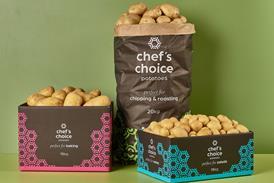



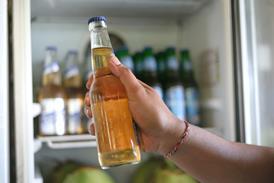
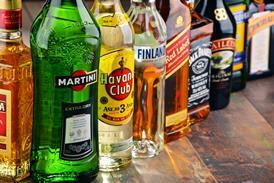





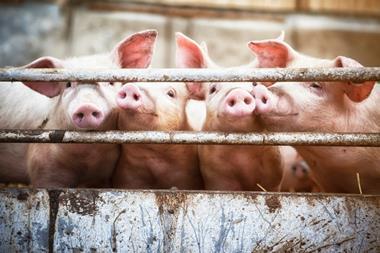

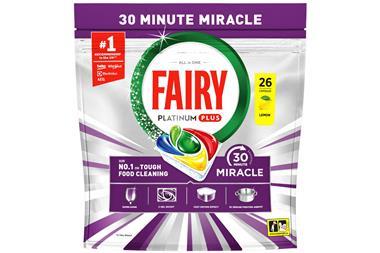

No comments yet